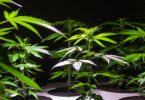Synthetic cannabinoids are not the same as a plant derived cannabinoid. They are chemical analogs that bind to our endocannabinoid receptors. The problem is that these designer drugs can hit our receptors at astronomically larger quantities than regular cannabis. Synthetic cannabinoids are marketed as K2, Spice, and many other names. Now, they are illegal under federal law in the United States.
The products were first discovered in the mid-90’s at Clemson University. Because they can cause such a heightened response in the endocannabinoid system, synthetic cannabinoids can have a severely negative effect. Take a look at this table made by Canntelligence taken from a paper written by Jake Freudenburger and Dr. Jokūbas Žiburkus, PhD. It clearly breaks down the differences between natural cannabis and synthetic cannabinoids:
|
Natural Cannabis (6) |
Synthetic Cannabis (7,12) |
|
Mild Increase in heart rate |
Significant increase in heart rate (tachycardia) |
|
Mild Lowering of blood pressure |
Significant increase in blood pressure (hypertension) |
|
Dizziness |
Confusion |
|
Red eyes and dilated pupils |
Agitation |
|
Dry mouth |
Vomiting |
|
Increased appetite |
Psychosis |
|
Altered perception (of time, self, etc.) |
Hallucinations |
|
Intensified sensations (touch, taste, sound, etc.) |
Seizures/Convulsions |
|
Irritation of lungs (causing coughing, phlegm, etc.) |
Heart attack |
One huge problem with synthetic cannabinoids is that they’re made in illegal labs overseas. The cross contamination and lack of standards in these labs are another huge reason that these drugs are so dangerous. The DEA did make Spice, K2, and other synthetic cannabinoid products illegal but it hasn’t stopped them from being produced in some other countries.
Now, these products are available in vape liquid. This is causing a resurgence in the use of synthetic cannabinoids and citing a larger need for education regarding the difference between the two. For a more detailed, comprehensive understanding of how cannabis flowers, extractions, and edibles differ from synthetic cannabinoids take a look at the detailed and knowledgeable paper published on Canntelligence.








